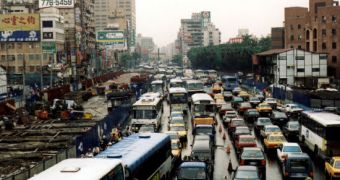Those exposed to both air and noise pollution run a higher risk of developing a cardiovascular disease, several German researchers now argue.
The scientists point out that, prior to their looking into how the combined effect of air and noise pollution affects public health, most studies have only focused on each of these two types of pollution at a time.
Wishing to determine how air and noise pollution harms the individual and makes them more prone to developing a cardiovascular disease, the researchers assessed the overall health condition of 4238 individuals inhabiting Germany's Ruhr region.
The average age of the people taken into consideration for this research was one of 60 years, and 49.9% of them were males, Newswise explains.
Apart from their looking at just how healthy these people were, the German scientists analyzed information concerning their exposure to fine particulate matter and traffic noise.
When compiling all the information they had collected in this manner, the researchers reached the conclusion that air and noise pollution triggers thoracic aortic calcification (TAC), which is an indicator of atherosclerosis.
Interestingly enough, it appears that fine particulate matter is roughly two and a half times more “efficient” than noise pollution in terms of upping a person's risk for cardiovascular diseases.
Thus, air pollution alone upped TAC burden by 19.9%, whereas noise pollution caused it to increase by 8%.
Still, Dr. Barbara Hoffmann wished to stress the fact that, “Both exposures seem to be important and both must be considered on a population level, rather than focusing on just one hazard.”
Commenting on the importance of these findings, Dr. Phillip Harber of the University of Arizone, who did not take part in this study, argued as follows:
“In the past, some air pollution studies have been dismissed because critics said it was probably the noise pollution that caused the harm, and vice versa.”
“Now we know that people who live near highways, for instance, are being harmed by air pollution and by noise pollution.”

 14 DAY TRIAL //
14 DAY TRIAL //